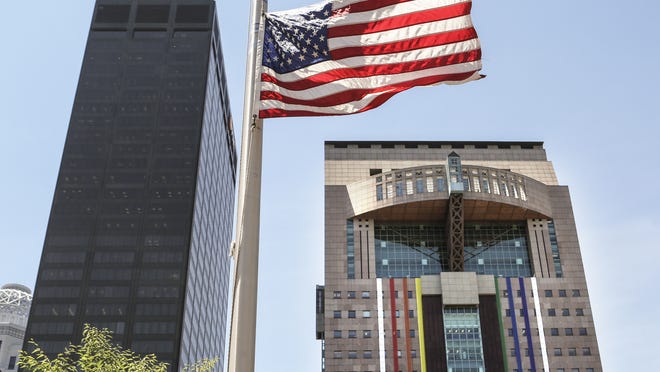
Last week's announcements that Fifth Third Bank and Humana would leave their downtown office towers reinforced the narrative that downtown Louisville is doomed. In fact, this moment is best viewed as an opportunity to acknowledge that the old model of a commuter- and business-focused downtown is over. Louisville has the opportunity to be a leader in developing the mixed-use urban neighborhood of the future that blends business, life and entertainment independent of the work habits of outlying neighborhoods.
Humana Tower Closing:A giant step in the wrong direction for downtown Louisville
How can we take advantage of the amenities of downtown Louisville?
While the office towers may be empty, downtown still has some of the best amenities in the city. In hindsight, 8,664 people may have been right, but Waterfront Park is still a world-class public space. The Yum Center and Slugger Field are located within two blocks of each other, as well as entertainment assets like Fourth Street Live, Whiskey Row and Louisville Theaters, not to mention the restaurants and independent shops in between. These are the types of things people want to live near to get the kind of lifestyle that many Louisville youth (myself included!) have moved to other cities to experience.
How can we benefit from this? Start building more housing. By some measures, 30% of downtown space is dedicated to parking (compared to 7% in Chicago, 4% in D.C., and 0.4% in New York). These lots are rarely full, and now they are fewer than ever. It's better to think of them as blank slates! Converting them into affordable, market-rate apartments and townhomes would be a better use of space. Add retail, education, and healthcare options and you have a thriving neighborhood. With fewer commuters and a more walkable residential community, wide, car-only streets aren't necessary either. Redesigning streets to accommodate multiple modes of transportation—cars, buses, bicycles, pedestrians—not only makes them safer and more efficient, it often makes them more enjoyable. In New York City, leaders plan to completely overhaul Fifth Avenue, one of the busiest and most famous streets in the world, by widening sidewalks, reducing car lanes and increasing space for buses and bikes.
Mayor Craig Greenberg:My team has a big, ambitious agenda for every part of Louisville.
Let Louisville create a future-focused ecosystem
What about empty skyscrapers? Office to residential conversions are becoming increasingly popular. For some, especially the Fifth Third building, this may be impractical – but a conversation around co-working, arts, events and educational space is possible. Some cities are even converting vacant office space into laboratories. These unused spaces could be beacons of a new economy that builds on Louisville's existing strengths. A UPS blockchain logistics research center or a major life sciences AI lab several floors above in a startup hub? We can create a future-focused ecosystem in one building where highly educated and well-paid employees can live and play nearby.
The hollowing out of the country's commercial areas has been, in crucial ways, beyond our collective control. However, we can shape what happens next. With the right regulations, policies and strategy, downtown can stand alone and serve as a regional and national model for a thriving neighborhood fit for a great city.

Joe Losavio was born and raised in the Highlands. He holds a dual bachelor's degree from the University of Southern California and a master's degree from the Johns Hopkins School of Advanced International Studies. He spent six years as a specialist in the Cities, Infrastructure and Urban Services team at the World Economic Forum and now works on global partnerships at Mastercard.

